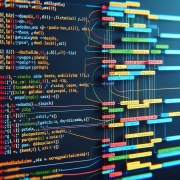Request a supercomputer!
Parallel processing in Python is a programming approach that allows developers to design programs in which different parts execute simultaneously, reducing the overall runtime. Python provides several libraries for parallel processing, including multiprocessing, threading, and concurrent.futures. Below are examples demonstrating how to use each of these methods:

multiprocessing LibraryThe multiprocessing library allows you to create separate processes that run concurrently.
pythonCopy codeimport multiprocessing
def worker(num):
"""Calculate the square of a number."""
print(f"Square of {num}: {num * num}")
if __name__ == '__main__':
# Create a list to hold processes
processes = []
for i in range(10):
p = multiprocessing.Process(target=worker, args=(i,))
processes.append(p)
p.start()
# Wait for all processes to complete
for process in processes:
process.join()
threading LibraryThe threading library creates threads that share the same memory space, which can be suitable for I/O-bound tasks.
pythonCopy codeimport threading
def worker(num):
"""Calculate the square of a number."""
print(f"Square of {num}: {num * num}")
if __name__ == '__main__':
# Create a list to hold threads
threads = []
for i in range(10):
t = threading.Thread(target=worker, args=(i,))
threads.append(t)
t.start()
# Wait for all threads to complete
for thread in threads:
thread.join()
concurrent.futures LibraryThe concurrent.futures library provides a higher-level interface for parallel execution, allowing you to use a thread or process pool.
pythonCopy codeimport concurrent.futures
def worker(num):
"""Calculate the square of a number."""
print(f"Square of {num}: {num * num}")
if __name__ == '__main__':
# Use a process pool to execute tasks in parallel
with concurrent.futures.ProcessPoolExecutor() as executor:
executor.map(worker, range(10))
multiprocessing:
threading:
concurrent.futures:
multiprocessing and threading.![☀️ Parallel processing server [cheap] ✔️ Amirkabir simulators✔️](http://hpc-rent.ir/wp-content/uploads/2025/01/58885569-350b-477a-b398-9efe4a4aa9c0-180x1801-1.jpg)
multiprocessing or concurrent.futures.ProcessPoolExecutor.threading or concurrent.futures.ThreadPoolExecutor.These tools provide flexibility and efficiency, allowing you to implement parallel processing effectively in Python for tasks ranging from simple calculations to complex real-world applications.
Related links